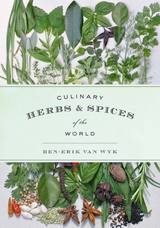

Indulge your senses with the lively flavors, vivid colors, and tantalizing aromas of fresh herbs. This comprehensive guide gives you creative, festive recipes as well as valuable gardening information. With Lucinda Hutson's expert advice you'll discover how to:
- Grow robust and flavorful herbs using organic gardening techniques.
- Harvest and store herbs.
- Prepare more than 150 delicious and innovative recipes.
- Create intensely flavored herb butters and savory vinegars.
- Garnish and flavor recipes with beautiful edible flowers.
- Grow and use exotic herbs from Mexico and Southeast Asia.
- Design menus for special occasions such as a fiesta for friends or a feast for two.
- Find the best sources, including websites, for buying plants, seeds, and gourmet products.
Savor the Tuscan-inspired Panzanella, the continental Celebratory Niçoise Salad, or the Southwestern-spirited Pollo Picado. Lucinda's suggested recipe variations will turn you into a kitchen quick-change artist. Ideas for dazzling presentations make your meals as pleasing to the eye as they are to the palate. From rosemary and thyme to Mexican mint marigold and Thai basil, this is an essential guide for cooks and gardeners alike!
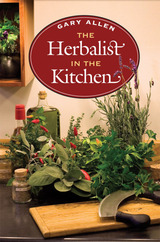
The foodie's ultimate herbal encyclopedia
Created as the ideal reference for anyone with a serious interest in cooking with herbs, spices, or related plant materials, The Herbalist in the Kitchen is truly encyclopedic in scope. It provides complete information about the uses, botany, toxicity, and flavor chemistry of herbs, as well as a listing for nearly every name that an ingredient is known by around the world.
Even including herbs and spices not yet seen in the United States (but likely to be featured in recipes for adventurous cooks soon), The Herbalist in the Kitchen is organized into one hundred and four sections, each consisting of a single botanical family. The book provides all available information about the chemical compounds responsible for a plant's characteristic taste and scent, which allows cooks to consider new subtleties and potential alternatives. For instance, the primary flavoring ingredient of cloves is eugenol; when a cook knows that bay leaves also contain eugenol, a range of exciting substitutions becomes clear. The Herbalist in the Kitchen also provides guidance about measuring herbs, enabling readers to understand the dated measuring standards from antique cookbooks.
A volume in The Food Series, edited by Andrew W. Smith
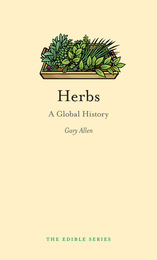
Salsa and guacamole wouldn’t be the same without cilantro, and you can’t make pizza without oregano or a mojito without mint. You can use peppermint to settle an upset stomach, ease arthritis pain with stinging nettle, and heal burns and wounds with aloe vera. And then there is cannabis—perhaps the most notorious and divisive herb of all. Despite the fact that herbs are often little more than weeds, cultures around the globe have found hundreds of uses for them, employing them in everything from ancient medicines to savory dishes. While much has been written on cooking and healing with herbs, little has been told about the history of the plants themselves and the incredible journeys they have made.
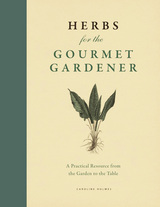
A feast for the eyes and the table, this user-friendly resource traverses the realms of both the garden and the kitchen, addressing the cultivation, storage, and preparation of more than sixty herbs. Practical growing tips, fascinating histories, nutritional information, and classic recipes appear alongside botanical illustrations drawn from the Royal Horticultural Society’s cherished collection. With both familiar varieties and novel options, Herbs for the Gourmet Gardener will inspire you to create a world of new shapes, colors, and tastes.
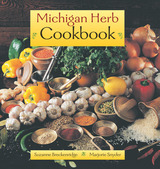
If you're interested in cooking with herbs and want to use the best of Michigan and the Midwest's seasonal foods, then this is the cookbook for you.
The recipe section is written for both the novice and the more experienced cook. Each recipe has helpful information about serving suggestions and menu ideas. Scattered throughout the book are handy tips related to foods, herbs, and cooking. In addition, Michigan Herb Cookbook includes a section on herb growing and designing in which planting, growing, freezing, drying, and storage tips for over thirty herbs are explained in detail.
You will find over 150 recipes in the book's seven chapters. More than half are low-fat, and there are many vegetarian favorites. Also, a chapter devoted to condiments and "little extras" contains various herb blend, vinegar, chutney, pesto, and sauce recipes, such as Sun-Dried-Tomato Pesto and Roasted Red Pepper Sage Sauce.
Suzanne Breckenridge, formerly a ceramics and cooking instructor, is now a food stylist and caterer. Marjorie Snyder is a freelance food writer, a cooking teacher at a junior college, and cofounder and president of the Madison Wisconsin Herb Society.
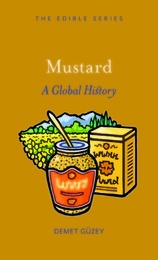
In this delightful global history of all things Grey Poupon and gleaming yellow, Demet Güzey takes readers on a tour of the ubiquitous mustard, exploring its origins, its use in medicine and in the kitchen, its place in literature, language, and religion, and its strong symbolism of sharpness, perseverance, and strength. Packed with entertaining mustard facts and illustrations as well as a selection of historic and modern recipes, this surprising history of one of the world’s most loved condiments will appeal to all food history aficionados.
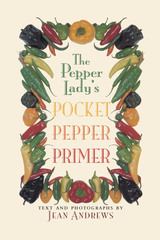
More than a quarter of the people on earth eat peppers every day of their lives, and true pepper lovers are always looking for better-tasting, hotter peppers. This handy, reliable guide makes finding them easy, as capsicum expert Jean Andrews shows you how to identify and use 42 peppers, both fresh and dried, commonly available in North American markets.
Andrews describes each pepper in detail, starting with its size, color, fruit shape, flesh, and pungency. She gives its common names, sources, and uses, and indicates other peppers that can substitute for it in recipes. Drawing on her vast store of pepper lore, she also includes notes and anecdotes about each pepper. Her color photographs illustrate all of the peppers.
In addition to the species descriptions, Andrews offers practical guidance on selecting and storing, roasting and rehydrating, and growing and harvesting peppers. She explains pepper nomenclature, describes the pungency factor, and notes the significance of color, aroma, flavor, and nutrition.
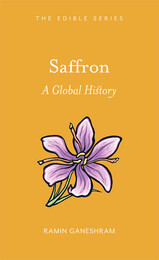
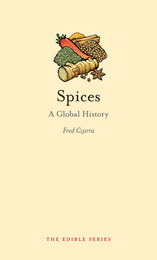
The scent of oregano immediately conjures the comforts of Italian food, curry is synonymous with Indian flavor, and the fire of chili peppers ignites the cuisine of Latin America. Spices are often the overlooked essentials that define our greatest eating experiences. In this global history of spices, Fred Czarra tracks the path of these fundamental ingredients from the trade routes of the ancient world to the McCormick’s brand’s contemporary domination of the global spice market.
Focusing on the five premier spices—black pepper, cinnamon, nutmeg, cloves, and chili pepper—while also relating the story of many others along the way, Czarra describes how spices have been used in cooking throughout history and how their spread has influenced regional cuisines around the world. Chili peppers, for example, migrated west from the Americas with European sailors and spread rapidly in the Philippines and then to India and the rest of Asia, where the spice quickly became essential to local cuisines. The chili pepper also traveled west from India to Hungary, where it eventually became the national spice—paprika.
Mixing a wide range of spice fact with fascinating spice fable—such as giant birds building nests of cinnamon—Czarra details how the spice trade opened up the first age of globalization, prompting a cross-cultural exchange of culinary technique and tradition. This savory spice history will enliven any dinner table conversation—and give that meal an unforgettable dash of something extra.
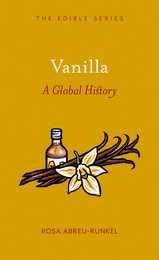
READERS
Browse our collection.
PUBLISHERS
See BiblioVault's publisher services.
STUDENT SERVICES
Files for college accessibility offices.
UChicago Accessibility Resources
home | accessibility | search | about | contact us
BiblioVault ® 2001 - 2024
The University of Chicago Press









